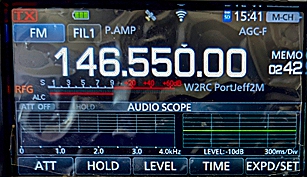Simplex communications
What are simplex communications
Using simplex is about as easy as amateur radio communication gets. Two or more operators using mobile, handheld (HT), or base station transceivers tune to the same frequency without a repeater re-transmitting the signals. Simplex communications1 are probably the lowest cost of entry into amateur radio. You can begin 2M VHF (FM) simplex communications with a $30.00 handheld and if the interest grows can get into more efficient and capable prosumer devices.
The key to making amateur radio communications work, as you will discover, is heavily dependant on the type and location of your antenna as this will determine how well you can hear and be heard by other operators. You can spend quite a bit more than the cost of your radio on antennas and getting your signal out but the sweet spot for the 2m Simplex connections can be reached with the simple $30.00 HT and its “Rubber Ducky” antenna. Just step outside and call “CQ”.
-
2m Simplex communications as used here, mean Analog FM. 2m Simplex communications can also take place over Single Side Band (SSB), AM and CW. FCC rules allow any of these modes to operate on 2m with 144.0 to 144.100 restricted to CW, aka morse code. Very few, if any, new HT’s support anything but analog FM or analog FM and a digital mode. Simplex Digital mode communications are incompatible with each other so not only would you need someone to answer your CQ on the frequency that you are using, they would also need to be running the same digital mode with the same digital configuration - a tall order if you are ** not ** connecting to a repeater. ↩︎
